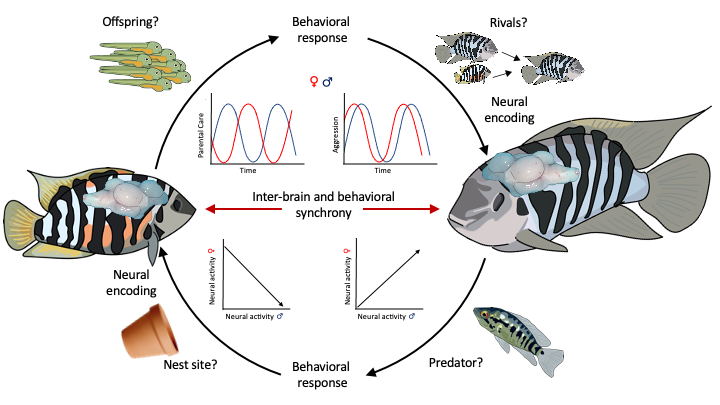Brain and Behavioral Synchronicity
As individuals make social decisions, they are constantly observing the responses of their peers and modifying their current decisions based on the perceived social consequences of past choices. Essentially, what we are observing is the synchronization of two interacting brains in response to external sensory inputs. The simplicity in which this is observed belies the neural complexity through which it occurs. Convict cichlids are and excellent model system to study synchronicity. Pair bonded males and females demonstrate the ability to encode information about the behavior of their partners and synchronize their responses as they navigate different environmental challenges such as establishing territories, building nests, and raising offspring. Importantly, the behavioral profile of each pair is unique. Here, I aim to uncover the underlying neural mechanisms through which this synchronization occurs.
